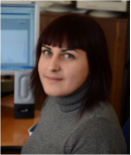Vestnik KRAUNC. Fiz.-Mat. Nauki. 2022. vol. 40. no. 3. pp. 88–100. ISSN 2079-6641
MSC 86-10
Research Article
Coupled oscillators as a model of high-frequency geoacoustic emission
M. I. Gapeev¹², A. A. Solodchuk¹, R. I. Parovik¹
¹Institute of Cosmophysical Research and Radio Wave Propagation FEB RAS, 684034, Paratunka, Mirnaya Str., 7, Russia
²Vitus Bering Kamchatka State University, 683032, Petropavlovsk-Kamchatskiy, Pogranichnaya str., 4, Russia
E-mail: gapeev@ikir.ru
The article is devoted to mathematical modeling of high-frequency (from units to tens of kilohertz) geoacoustic emission of near-surface sedimentary rocks recorded in Kamchatka. Dislocation emission sources are located in the volume of rocks bounded by a hemisphere of radius 37 m centered at the registration point. A typical signal
of high-frequency geoacoustic emission is a combination of relaxation pulses. These pulses are closest in shape to the Berlage pulses. The article proposes a mathematical model of high-frequency geoacoustic emission of near-surface sedimentary rocks in the form of a system of coupled oscillators. Each oscillator describes a dislocation source of geoacoustic emission. The interaction between the sources is carried out only through radiation. A system of two coupled oscillators is considered. The Rosenbrock method was used to find numerical solutions for different values of the coupling coefficient between sources. Oscillograms, spectra and phase trajectories of the process under consideration are constructed. An analysis of the solutions showed that as the coupling coefficient increases, a stable energy exchange between the oscillators is observed.
Key words: high-frequency geoacoustic emission, mathematical modeling
DOI: 10.26117/2079-6641-2022-40-3-88-100
Original article submitted: 20.10.2022
Revision submitted: 18.11.2022
For citation. Gapeev M. I. , Solodchuk A. A., Parovik R. I. Coupled oscillators as a model of high-frequency geoacoustic emission. Vestnik KRAUNC. Fiz.-mat. nauki. 2022, 40: 3, 88-100. DOI: 10.26117/2079-6641-2022-40-3-88-100
Competing interests. The authors declare that there are no conflicts of interest regarding authorship and publication.
Contribution and Responsibility. All authors contributed to this article. Authors are solely responsible for providing the final version of the article in print. The final version of the manuscript was approved by all authors.
Funding. The work was carried out with the financial support of the Russian Science Foundation (project No. 22-11-00064).
The content is published under the terms of the Creative Commons Attribution 4.0 International License (https://creativecommons.org/licenses/by/4.0/deed.ru)
© Gapeev M. I., Solodchuk A. A., Parovik R. I., 2022
References
- Marapulets Y. V., et. al. Geoacoustic emission response to deformation processes activation during earthquake preparation, Russian Journal of Pacific Geology, 2012, 6:6, 457–464, DOI: 10.1134/S1819714012060048.
- Kissin I. G. Flyuidy v zemnoy kore: Geofizicheskie i tektonicheskie aspekty [Fluids in the Earth’s Crust: Geophysical and Tectonic Aspects]. Moscow, Nauka, 2015, 328 (In Russian)
- Dolgikh G. I., et al. Deformation and acoustic precursors of earthquakes, Doklady Earth Sciences, 2007, 413:1, pp. 281–285, DOI: 10.1134/S1028334X07020341.
- Morgunov V. A., Lyuboshevskij M. N., Fabricius V. Z., Fabricius Z. E. Geoakusticheskij predvestnik Spitakskogo zemletryaseniya [Geoacoustic precursor of the Spitak earthquake], Vulkanologiya i sejsmologiya [Volcanology and seismology], 1991, 4, 104–106. (In Russian)
- Gregori G.P., et al. «Storms of crustal stress» and AE earthquake precursors, Natural Hazards and Earth System Sciences, 2010, 10, 319–337. DOI: 10.5194/nhess-10-319-2010.
- Saltykov V. A., Kugaenko Y. A. Development of near-surface dilatancy zones as a possible cause for seismic emission anomalies before strong earthquakes, Russian Journal of Pacific Geology, 2012, 6:1, pp. 86–95. DOI: 10.1134/S1819714012010113
- Marapulets Yu. V. High-frequency acoustic emission effect, Bulletin KRASEC. Phys. and Math. Sci., 2015, 10:1, 39–48. DOI:10.18454/2079-6641-2015-10-1-44-53 (In Russian)
- Marapulets Yu. V., Shevtsov B. M. Mezomasshtabnaya akusticheskaya emissiya [Mesoscale acoustic emission]. Vladivostok, Dal’nauka, 2012, 126 (In Russian)
- Krylov V. V., Landa P. S., Robsman V. A. Model’ razvitiya akusticheskoy emissii kak khaotizatsiya perekhodnykh protsessov v svyazannykh nelineynykh ostsillyatorakh [Model of acoustic emission development as chaotic transition processes in coupled nonlinear oscillators], Akusticheskiy zhurnal [Acoustic journal], 1993, 39:1, 108–122 (In Russian)
- Tristanov A., Lukovenkova O., Marapulets Yu., Kim A. Improvement of methods for sparse model identification of pulsed geophysical signals, In: Conf. proc. of SPA-2019, Poznan, IEEE, 2019, 256–260. DOI: 10.23919/SPA.2019.8936817
- Rakitskiy Yu. V., Ustinov S. M., Chernorutskiy I. G. Chislennyye metody resheniyazh zhestkikh sistem [Numerical methods for solving stiff systems]. Мoscow, Nauka, 1979, 209 (In Russian)

Gapeev Maksim Igorevich – Postgraduate student of Vitus Bering Kamchatka State University, Petropavlovsk-Kamchatsky, Junior Researcher, Lab. of Acoustic Research, Institute of Cosmophysical Research and Radio Wave Propagation FEB RAS, Paratunka, Russia ORCID 0000-0001-5798-7166.

Solodchuk Aleksandra Andreevna – Cand. Sci. (Phys. & Math.), Senior Researcher, Lab. of Acoustic Research, Institute of Cosmophysical Research and Radio Wave Propagation FEB RAS, Paratunka, Russia ORCID 0000-0002-6761-8978.

Parovik Roman Ivanovich – D. Sci. (Phys. & Math.), Assoc. Prof., Leading Researcher, Lab. for Simulation of Physical Processes, Institute for Cosmophysical Research and RadioWave Propagation FEB RAS, Paratunka, Russia, ORCID 0000-0002-1576-1860.

